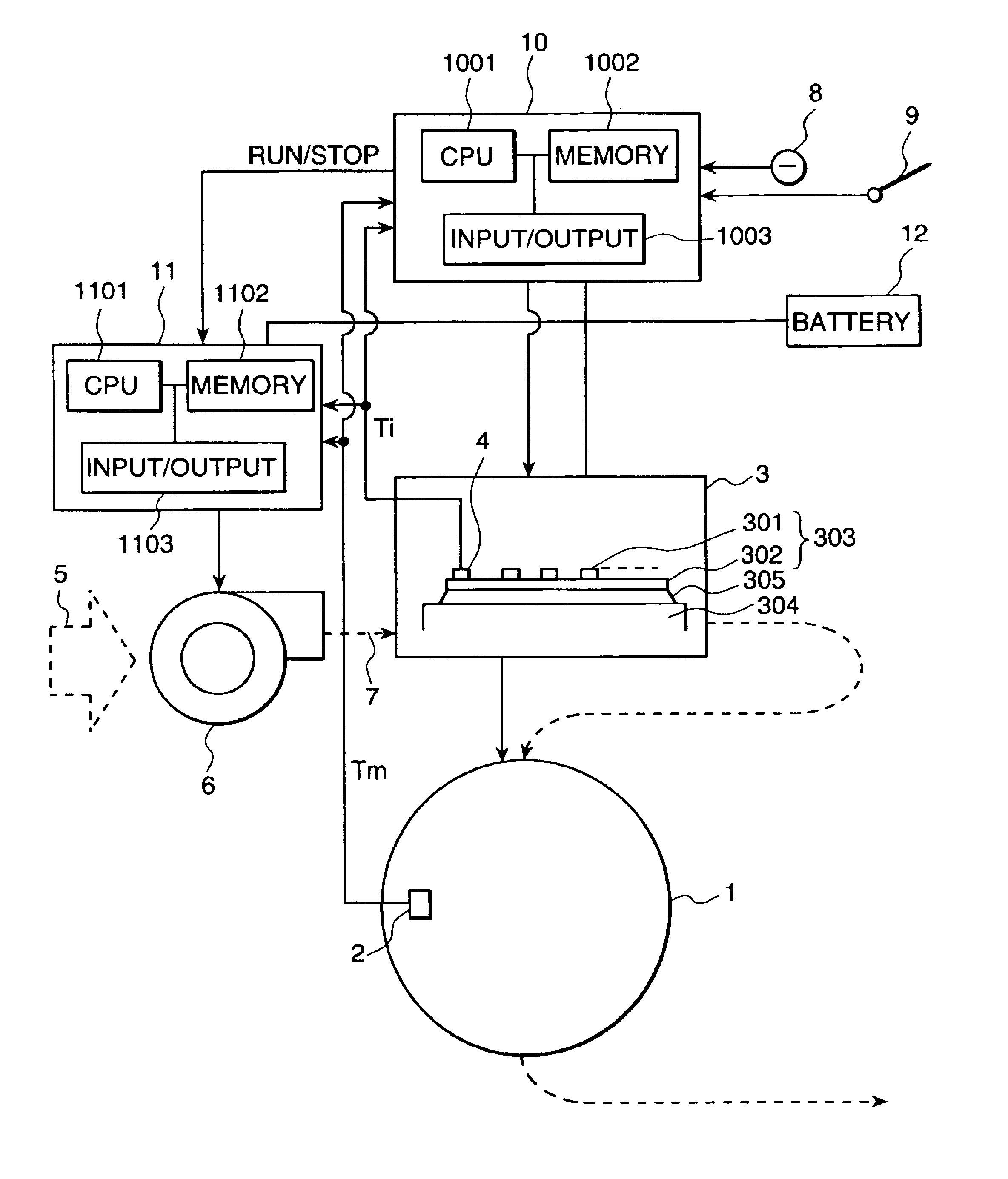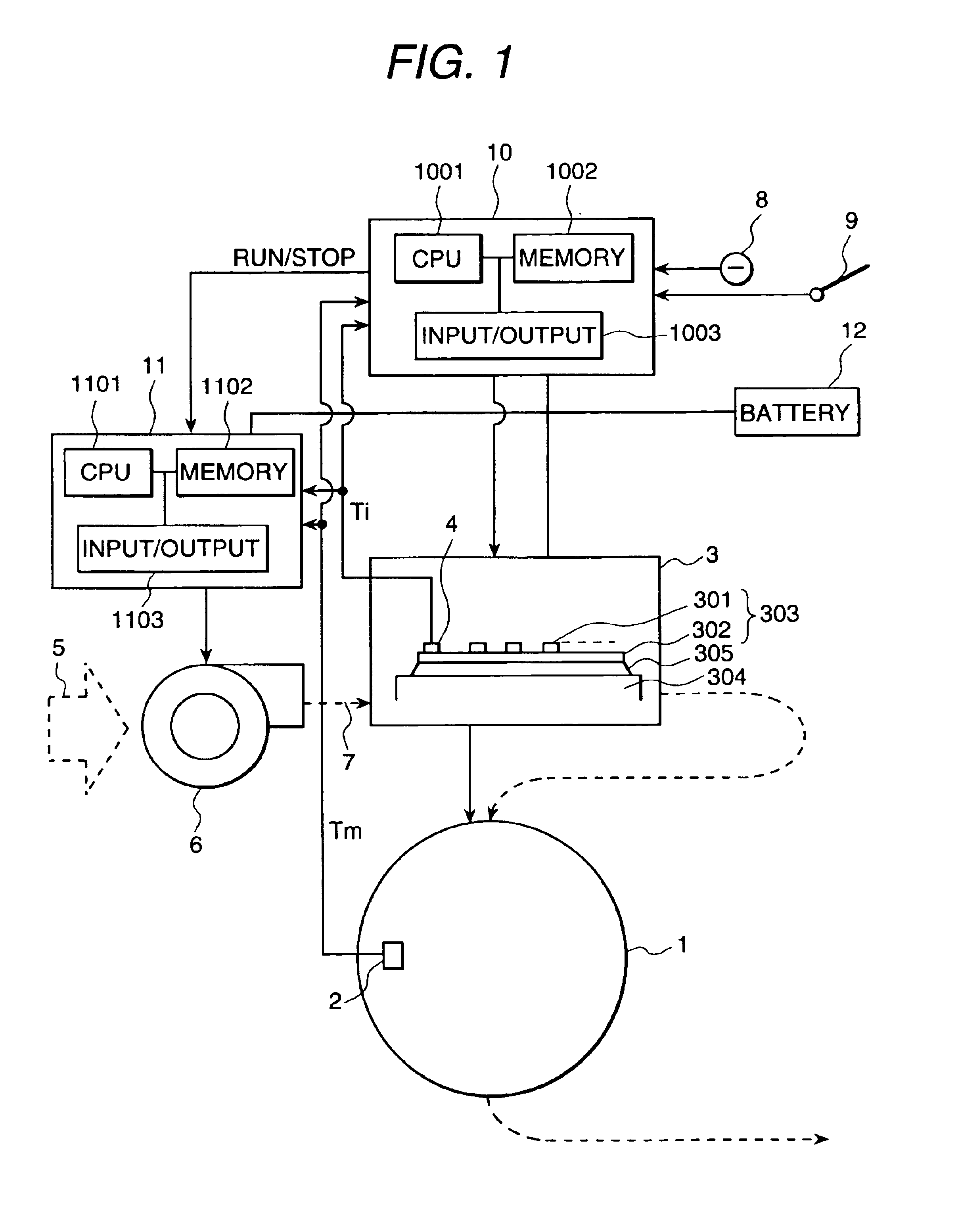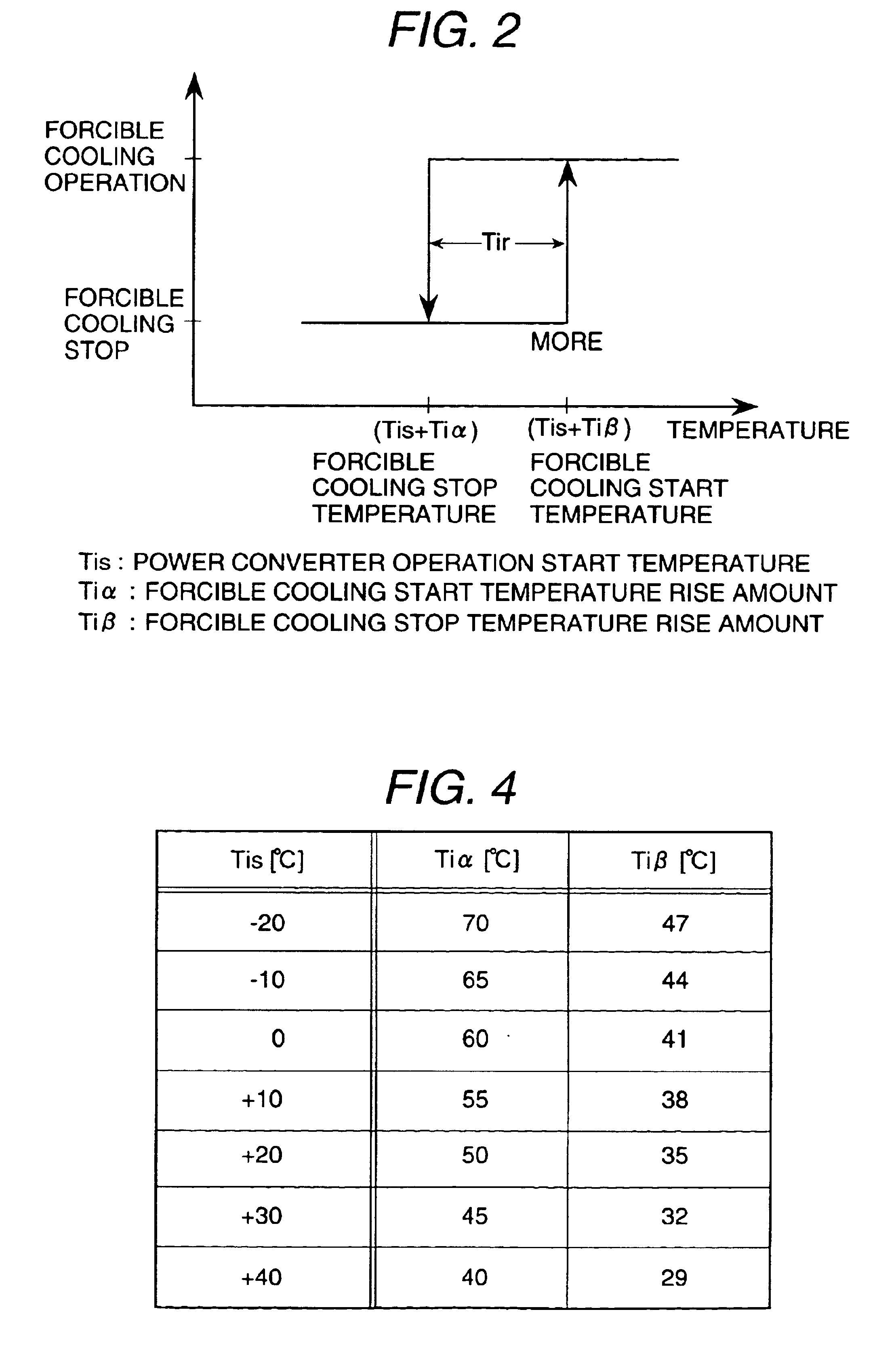Cooling system for motor and cooling control method
- Summary
- Abstract
- Description
- Claims
- Application Information
AI Technical Summary
Benefits of technology
Problems solved by technology
Method used
Image
Examples
second embodiment
[0085]More specifically, in the control provided in the second embodiment, a process is added to obtain and set the power converter cooling start temperature (Tis+Tiα) and the power converter cooling stop temperature (Tis+Tiβ) at Step S3, in which the CPU 1101 of the cooling control unit 11 selects the cooling start temperature rise amount Tiα and the cooling stop temperature rise amount Tiβ to be added to the power converter operation start temperature Tis according to the power converter operation start temperature Tis.
[0086]A third embodiment of the present invention will be explained with reference to FIGS. 1 to 5. FIG. 5 is a temperature characteristic diagram showing changes with time of the temperature of the power converter of the third embodiment.
[0087]During the stop period, after the end of operation, the temperatures of the driving motor 1 and the power converter 3 slowly lower due to natural cooling. Therefore, when the operation is restarted within a short period after...
third embodiment
[0092]Therefore, the third embodiment is structured so that, in a case of operation restart after such an operation stop for a short time, the temperature of the power converter 3 lowers sufficiently and the power converter operation start temperature Tis1 at the time of the preceding operation start, which is an operation start after a long stop period causing the thermal stress to disappear, is adopted as the power converter operation start temperature Tis for setting the power converter cooling start temperature (Tis+Tiα) and the power converter cooling stop temperature (Tis+Tiα) to be used for forced cooling control of the power converter 3.
[0093]To realize this forced cooling control, the CPU 1101 of the forced cooling control unit 11 of the third embodiment has a clock function, and the memory 1102 has an information holding function for storing and holding a desired stop period which has been preset in consideration of the time necessary for sufficient lowering of the tempera...
fourth embodiment
[0097]The fourth embodiment has a structure such that the heat of the power converter 3 and the driving motor 1 is carried away by a liquid refrigerant, and the heat of the liquid refrigerant is radiated to fresh air by a radiator cooled with a fan. The heat radiation capacity (operation and stop of the motor fan) of the radiator, that is cooled with a fan by fresh air is, controlled. Namely, in a state in which a liquid refrigerant is circulated and the units are force cooled, when the temperature difference between the liquid refrigerant and the fresh air is large, heat is radiated by natural ventilation because the radiation capacity of the radiator is large; and, when the temperature difference between the liquid refrigerant and fresh air is small, heat radiation is promoted by forced ventilation because the radiation capacity of the radiator is small.
[0098]In the fourth embodiment, as a refrigerant circulation system for circulating a refrigerant, a forced cooling refrigerant f...
PUM
 Login to View More
Login to View More Abstract
Description
Claims
Application Information
 Login to View More
Login to View More - R&D
- Intellectual Property
- Life Sciences
- Materials
- Tech Scout
- Unparalleled Data Quality
- Higher Quality Content
- 60% Fewer Hallucinations
Browse by: Latest US Patents, China's latest patents, Technical Efficacy Thesaurus, Application Domain, Technology Topic, Popular Technical Reports.
© 2025 PatSnap. All rights reserved.Legal|Privacy policy|Modern Slavery Act Transparency Statement|Sitemap|About US| Contact US: help@patsnap.com



